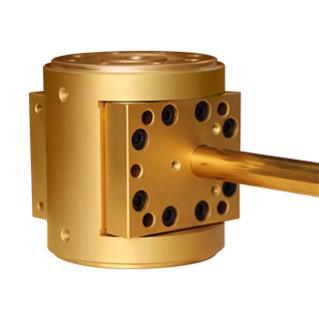The cause of the release of the coupling of the melt pump coupling
The cause of the release of the coupling of the melt pump coupling
1.High load of melt pump
So far, all the melt pump coupling tripping occurs when the load of the melt pump is above 110% of the design load. At the same time, compared with DuPont technology and other polyester equipment, only in our design, the melt cooler was arranged after the melt pump, and the other manufacturers' melt coolers were set up after the spinning booster pump. As a result, the outlet pressure of the melt pump is increased by about 4 MPa, which increases the load and torque of the melt pump. At this point, the melt pump speed exceeds 36 R / min, and its design speed is only 37.6 r/min. When the melt pump and the coupling are working in a critical state for a long time, the sudden sudden increase of torque will make the coupling easier to pull off once the load fluctuates or the resistance of the foreign body.

2 melt solidified at the shaft seal
The melt pump is sealed with the combined structure of reverse spiral seal + packing seal and cooling water with cooling water. It uses melt self lubrication, melt the melt to the seal at the outlet of the melt pump and return to the population side of the pump, so as to lubricate the lubricating part and ensure that the shaft seal has certain pressure at the same time. The external air enters a human vacuum reaction system. In practice, the pump must maintain a micro leakage state at the shaft seal. This can not only avoid the increase of friction caused by the melt condensation at the shaft seal, the increase of torque, but also avoid the safety hidden danger caused by a large amount of melt leakage, the decrease of the efficiency of the melt pump and the rise of the actual load.
In actual operation, because the leakage of shaft seal is controlled by the cooling water hand valve, it is possible that the melt of the shaft seal is completely cooled and solidified because of the change of the temperature, pressure and flow of the cooling water. The torque of the pump is increased and the coupling is pulled off.